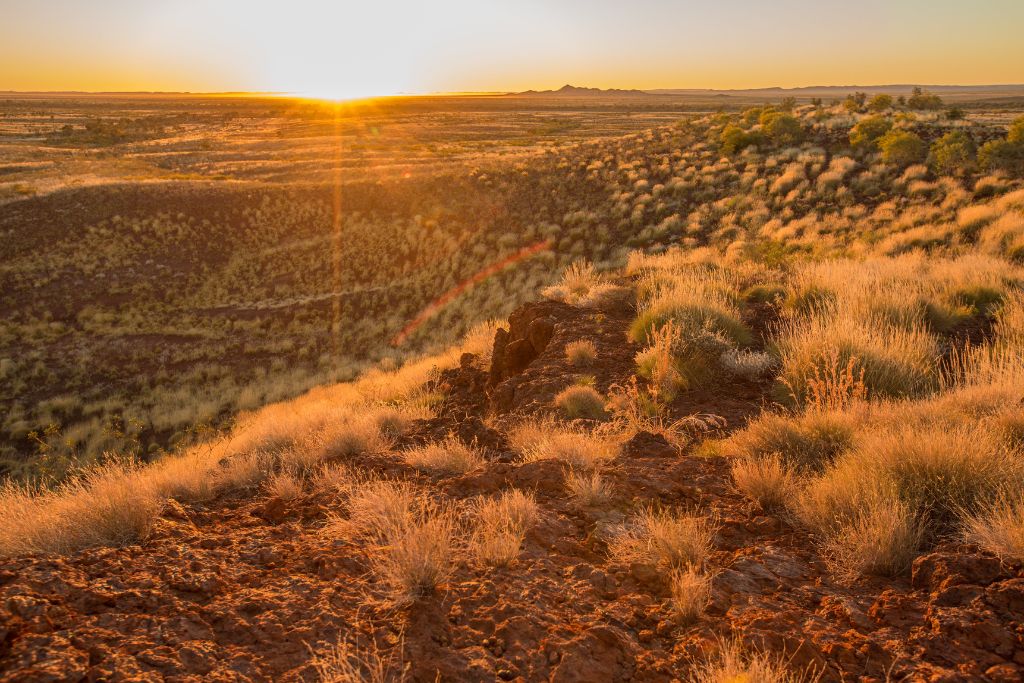For tens of thousands of years, the Aboriginal and Torres Strait Islander peoples of Australia have sustainably cultivated, managed, and conserved the continent’s lands, waterways, and seas. Their profound connection with and respect for Country remind us of the intricate interrelations between humans and the ecosystems of which we are part. Thankfully, through First Peoples’ ecological collectives and Indigenous Protected Areas, this traditional wisdom is appreciatively centred and applied in contemporary Australia.
—
Disclaimer: This article avoids the designations “Indigenous Australians/Peoples” because, according to Reconciliation Australia, some individuals may perceive these terms as offensive. Moreover, the Torres Strait is also known as Zenadh Kes. And, with consideration for the “nothing about us without us” sentiment, we would like to clarify that the author of this article is not a member of these communities.
First Nations Australians and Their Connection to Country
In Australia, the terms “First Nations,” “First Peoples,” “Aboriginal Australians,” and “Indigenous Australians” are used for convenience to refer to a wide range of distinct peoples, with living cultures and diverse languages.
Aboriginal and Torres Strait Islander peoples are estimated to have arrived on the continent between 50,000 and 65,000 years ago. For tens of thousands of years, their reciprocal, sustainable relationships with nature, or Country, has valued their varied ancestral lands, waterways, and seas.
But the concept of Country extends beyond physical, tangible places. It includes belief systems, symbolism, and spirituality. Country is all lifeforms, including “people, plants and animals … seasons, stories and creation spirits.” Similarly, Dreaming or Dreamtime describes a spiritual link to “everything around us and beyond us.”
Further, for Aboriginal and Torres Strait Islander peoples, Country is seen as a person, too. Like human life, it is alive and deserves protection.
Regarding ecological management and conservation, just as Land provides for people, people in turn manage and preserve Land. This view of nature – of which we are part, and which supports and sustains us – reminds us of the fundamental interconnectedness and interdependence of biodiversity and ecosystems. We are a piece of the natural whole.
In the words of Ambelin Kwaymullina, from her book Living on Stolen Land: “Human beings / might not speak the language / of other forms of life / might not know / their law / all their culture-ways / but this does not mean / those ways do not exist / or that other life / is not family.”
The identities of many Aboriginal and Torres Strait Islander peoples are tied with their Country, culture, and community. Welcome to Country writes that “caring for Country” encompasses all activities in Aboriginal terrestrial and marine regions that seek to encourage ecological, spiritual, and human wellbeing.
You might also like: Daintree Rainforest: World’s Oldest Rainforest Returns to Australian Aboriginal People
First Peoples’ Land Cultivation and Fire-Stick Farming
It is a popular notion that diverse indigenous peoples, prior to colonisation or modernisation, always lived in mutual harmony with nature. But this certainly does not mean they never modified or managed the natural environment.
In the Australian context, prior to European arrivals, First Nations peoples controlled and maintained the continent’s landscapes (and plants and animals) through wide-ranging practices. These agricultural and other land cultivation activities were sustainable and contributed towards healthy ecosystems. Practices included:
- Growing and harvesting onions, yams, macadamia nuts, and fruits
- Creating reserves of grain and flour
- Raising dingoes, emus, cassowaries, and possums
- Building fish traps, ponds, channels, and weirs (e.g., to harvest eels)
- Establishing grasslands
- Fire-stick farming
To this day, First Peoples continue to engage in fire-stick farming, also known as fire farming, cultural burning, or cool burning. Although combining “fire” and “Australian bush” might seem concerning, fire has always been central to rejuvenating the continent’s bushland. Over millennia, First Nations peoples have developed sophisticated fire management techniques, such as fire-stick farming.
The process involves using sticks (or matchsticks) to light small, controlled fires during the cool, early dry season – between March and July. These fires remove the underbrush, creating a patchy land mosaic with fire breaks. So, fire farming helps prevent the vegetation build-up that, left unchecked, fuels the hot, uncontrolled bushfires that rage during summer. And cultural burning not only reduces these uncontrolled bushfires but their associated carbon emissions.
Further, as night dew cools the fires, ideal times to set these fires are nights and early mornings. Hence the alternate name cool burning. First Australians have long adapted their techniques to suit a particular region’s conditions. For instance, they considered the ecosystem’s habitats, moisture levels, soils, and vegetation. Doing so allowed them to control how, when, and where to appropriately light these slow-burning, cool fires.
Along with preventing blazing, hot wildfires, cultural burning serves other purposes, according to the Watarrka Foundation. These include:
- Renewing local flora
- Protecting the tree canopy
- Safeguarding native animals
- Encouraging seed germination
- Provisioning of organic medicinal relief to animals (such as “wallabies and birds who bathe in cool ash to cleanse themselves” of lice)
- Restoring kinship to Land
- Sharing of traditional knowledge intergenerationally
Fire-stick farming has ecological, societal, and spiritual benefits. It also offers modern economic benefits, such as lowered carbon emissions. Remembering the 2019-2020 Black Summer bushfires, during which 6.2% of New South Wales was burnt, we can see why traditional cool burning is so crucial. The City of Sydney has thus partnered with the Aboriginal Carbon Foundation, a not-for-profit run by First Nations peoples that provides carbon farming services.
Beyond cultural burning, First Peoples have traditionally harnessed fire for other reasons. This resource from the University of Melbourne cites motives such as taming “thick and prickly” vegetation, attracting wild animals to hunt, facilitating the growth of vegetation, and developing “useful food plants, [and] for cooking, warmth, signalling and spiritual reasons.”
Indigenous Protected Areas (IPAs) in Australia
An essential element of reconciliation is acknowledging the deep connection that Aboriginal and Torres Strait Islander peoples have with Country. They have conserved, cared for, and managed the continent’s landscapes and seas for time immemorial. First Nations peoples have literal millennia of knowledge, passed down intergenerationally, about how to properly conserve Country.
These facts illustrate the importance of Indigenous Protected Areas (IPAs). An Indigenous Protected Area is an Australian land and/or sea region safeguarded by Traditional Owners, via a voluntary agreement with the Commonwealth Government. The IPA program was established by the government back in 1997.
As of 2023, there are now 81 dedicated Indigenous Protected Areas, covering over 87 million hectares. This means they represent a size larger than the state of New South Wales. Also, IPAs comprise roughly 45-50% of Australia’s National Reserve System, which is “the network of protected areas – including National Parks – that stretches across Australia.” First Peoples rangers funded by the government manage activities in around 70% of IPAs.
Originally, IPAs were based on native land tenure; however, their scope was broadened to be based on Country. This means Aboriginal and Torres Strait Islander peoples have increased governance and planning power over “land and sea areas over which they have limited legal rights, including over existing national parks and marine parks.” Thus, IPAs allow First Australians to manage and conserve both terrestrial and ocean territories, ensuring the protection of the continent’s unique biodiversity, including its rich animal and plant life.
First Nations’ Environmental Initiatives in Australia
Along with Indigenous Protected Areas, organisations, movements, and indigenous corporations led by Aboriginal and Torres Strait Islander peoples are also crucial for maintaining ecological stability. The following are a few of the environmental, climate justice, and land management collectives run by First Australians.
The Arafura Swamp Rangers Corporation was founded in 2013 to represent a network of eight ranger groups who collectively care for 14,000 square kilometres of north-east Arnhem Land. Together, they represent the interests of the Yolngu and Bi peoples of the Northern Territory. The Arafura Swamp, also known as Gurruwiling, has been listed as a Key Biodiversity Area. The rangers care for Country through numerous activities, such as managing fires and sea Country, protecting threatened species, and mapping and archiving.
Firesticks Alliance Indigenous Corporation is an initiative and community of practice centred around fire-stick burning. The alliance was established to keep alive and share traditional understandings, connect communities, record cultural wisdom, and provide training and on-the-ground planning.
As just one example, the Firesticks Alliance has sought to identify the goals and values inherent to cultural burning, finding that responses covered “natural, spiritual, economic, educational and social domains and encompass[ed] values that are both similar and different from mainstream environmental management.”
The Our Islands Our Home campaign, led by the Torres Strait 8, seeks to reverse the effects of climate inaction for the Torres Strait Islands. Rising sea levels, coral bleaching, and land erosion already threaten homes, sacred and cultural sites, burial grounds, and freshwater reserves in the territory.
The campaign’s five demands include, among others, 100% renewable energy for Zenadh Kes, a quick transition from fossil fuels, and programmes for locals to adapt to the impacts of climate change.
Seed Indigenous Youth Climate Network is the first climate action movement for First Australians youth. It was founded with the awareness that Aboriginal and Torres Strait Islander peoples are at the forefront of climate change, and that the world’s younger populations will be most affected by the climate crisis. The network is by and for First Nations youth only. Seed’s mission is to create a just future with renewable energy and strong cultures.
Final Thoughts
First Nations environmental management in contemporary Australia has been cited as a model from which other countries can learn. Collectively, these strategies comprise both First Peoples’ initiatives and movements, and government–First Nations collaborations, such as Indigenous Protected Areas (spanning 50% of the continent’s protected land).
With tacit and explicit ecological wisdom passed down for millennia, Aboriginal and Torres Strait Islander peoples have a wealth of invaluable knowledge to share about sustainable land and sea conservation.
This article was first published on March 24, 2023
You might also like: Indigenous People Are Essential for Preventing Biodiversity Loss. They Mustn’t Be Sidelined.


















